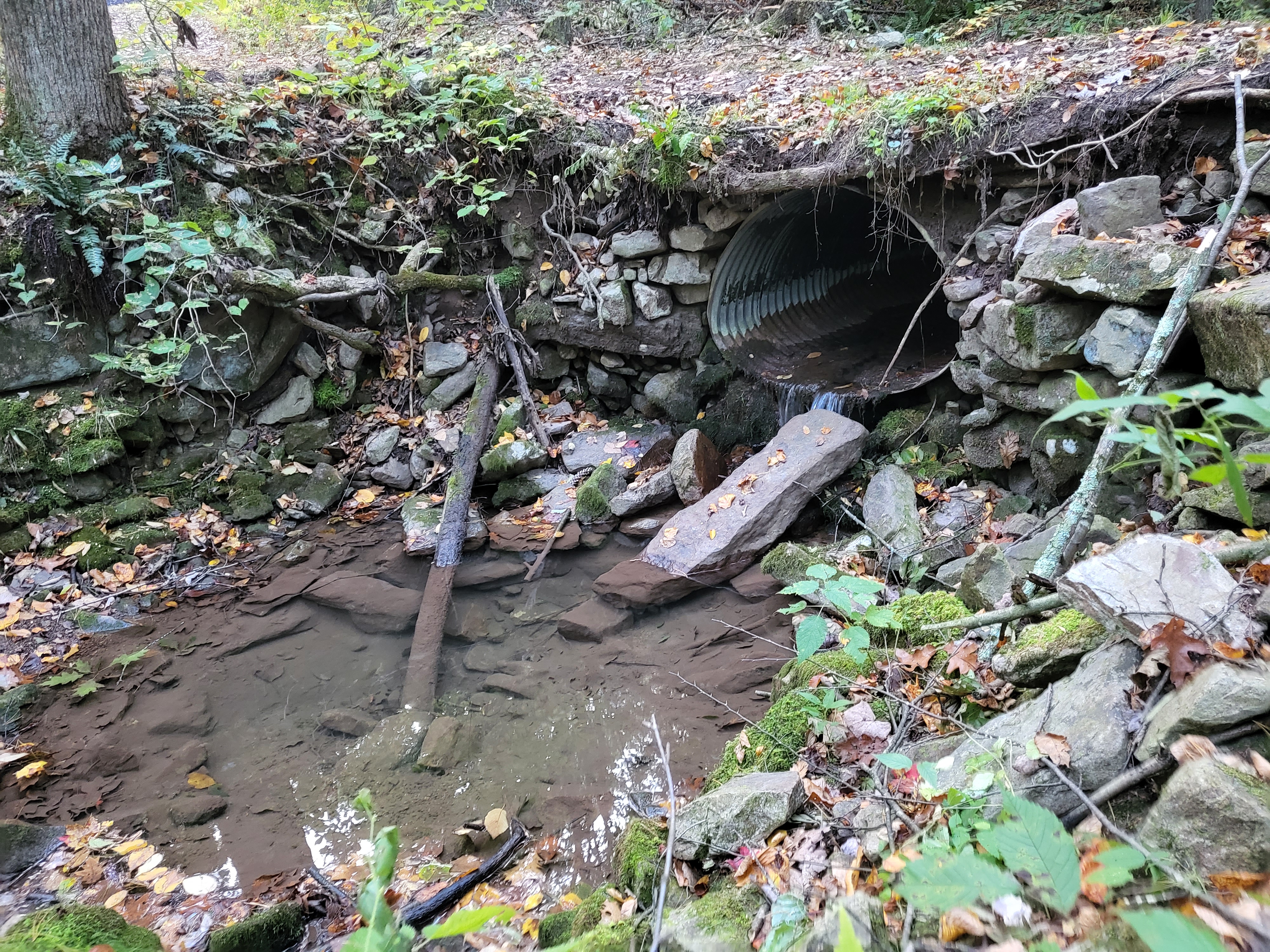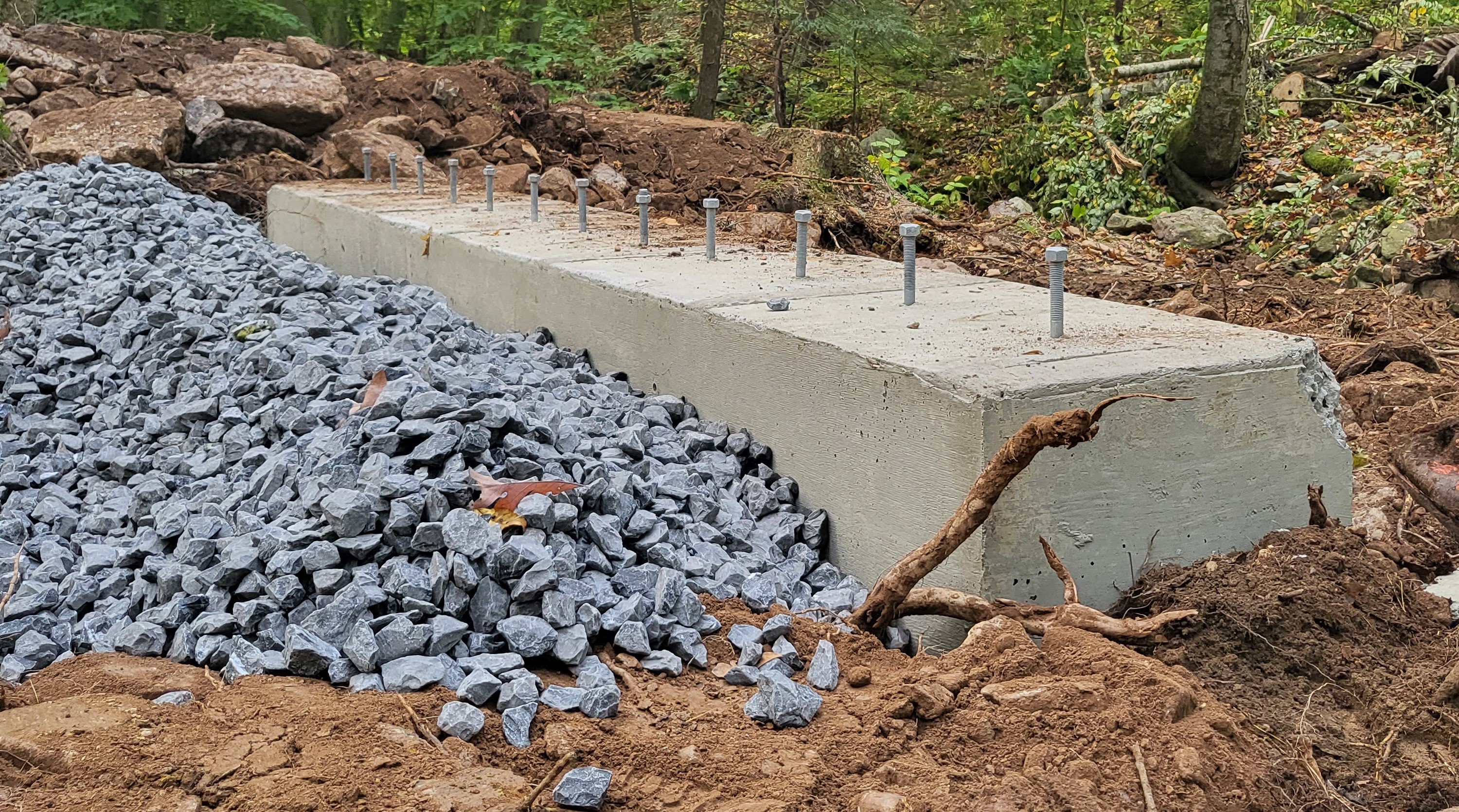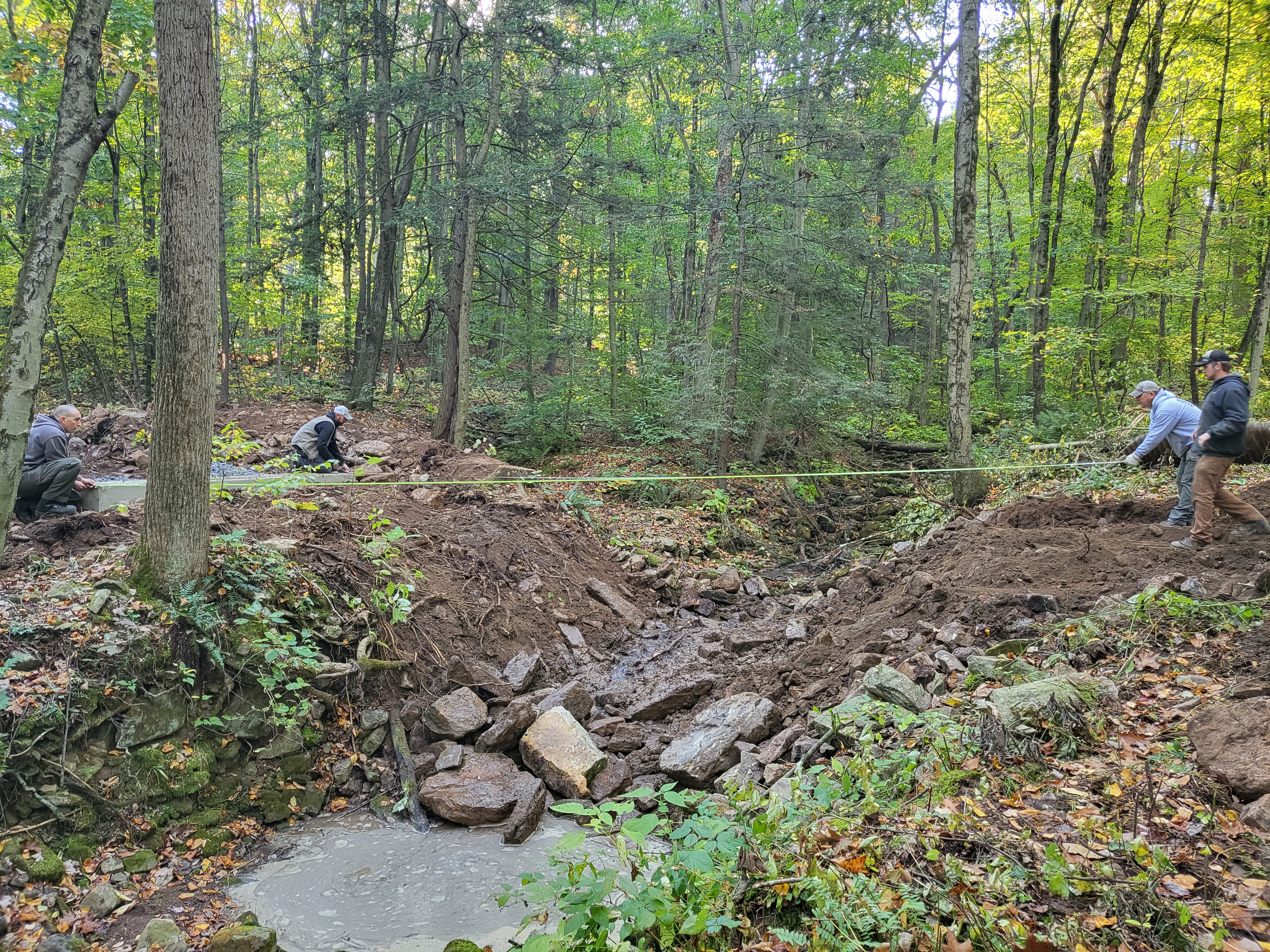So what makes a culvert bad? While culverts work well for diverting water during storms, they make movement difficult for fish and other aquatic organisms. Culverts often alter the flow of streams, making the water too fast to swim against or too shallow to swim through. If a culvert is too high, it can also cause a waterfall that makes it almost impossible for a fish to swim up.

The bottom material of a culvert is also a barrier for aquatic organism movement. Species like crayfish rely on the rocks found in a natural streambed for cover while moving through streams. With a culvert, the streambed is converted into a smooth concrete or metal surface with no rocks to provide this cover, making it almost impossible to move through. When fish and other aquatic organisms can’t move freely up and down stream, it’s difficult for them to find the food and shelter they need to survive.
Upgrading to Bridges
Bridges are a win-win for wildlife and people: the stream gets restored to its natural state, and we can still drive freely over it without causing any disturbance.
The first step in the bridge-building process is to place a concrete footer on one side of the culvert. Once we pull the culvert out, we won’t be able to access that far side of the stream, so it’s important we do this step first.

After
the concrete footer is in place, we can pull out the old culvert pipe. We use the excavator to dig up the dirt on top of the pipe and then slowly but surely work the pipe out of the ground. Once the pipe is out, we set it to the side and compress it for future disposal.
The next step is to return the stream to its natural shape and size. We use the excavator again to pull back rocks and dirt that have been constricting the stream’s flow and open up the natural waterway. We use the width of the stream on either side of the culvert to make sure we return this part of the stream back to its normal width and size. To keep this shape and help reduce the amount of dirt that washes downstream, we put large rocks along the side and pack them in to create a sort of armor.

Once the stream is back to normal, it’s time to start building the bridge. We pour the second concrete footer on the other side of the stream and let it cure. Once the concrete is ready, we place six giant beams across the stream and secure them to those concrete footers using big bolts.
Once all the beams are in place, we start building the bridge’s deck, which is what the trucks will be driving on. We nail wooden boards all the way across to create a strong bridge that can support the weight of our heaviest trucks.
 After the boards are in place, it’s just a matter of putting protective bumpers on either side, making ramps out of stone on either end, and cleaning up the site.
After the boards are in place, it’s just a matter of putting protective bumpers on either side, making ramps out of stone on either end, and cleaning up the site.
Soon after the bridge is built, fish will be checking out the newly formed streambed and moving up and down the now-accessible channel. Usually, the area will return to normal after one or two years since large storms may still wash away any loose dirt that was created by the project. As sticks and leaves begin to fall into the stream, mother nature returns the stream back to how it was before the culvert was ever there.
Effects on Trout & Aquatic Species
Concerned about trout? We are too! Before starting any culvert replacement project, we assess the stream quality and spawning activity of special aquatic species, such as our beautiful native brook trout. If we find trout present, we wait until the spawning season is over before starting a project to make sure we’re not negatively affecting them.
-
To further protect aquatic species, we always wait until water flow is low, which limits the amount of erosion going into the stream.
Benefits to Wildlife & Habitat
Why is the PGC working with streams? While it may seem like stream projects aren’t in our wheelhouse, we’ve made it our mission to protect all wildlife and their habitats, and streams are no exception! Healthy aquatic communities lay the foundation for healthy wildlife populations.
Whether deer are using the stream for drinking water or otters and other wild mammals are using its aquatic organisms for nutrition, it’s important we protect these natural resources.
 Mercy Melo
Mercy Melo
Mercy Melo is the Environmental Education Specialist for the Game Commission’s Northcentral Region. Mercy found her passion for conservation while conducting research on raptors, which she still enjoys volunteering with today!